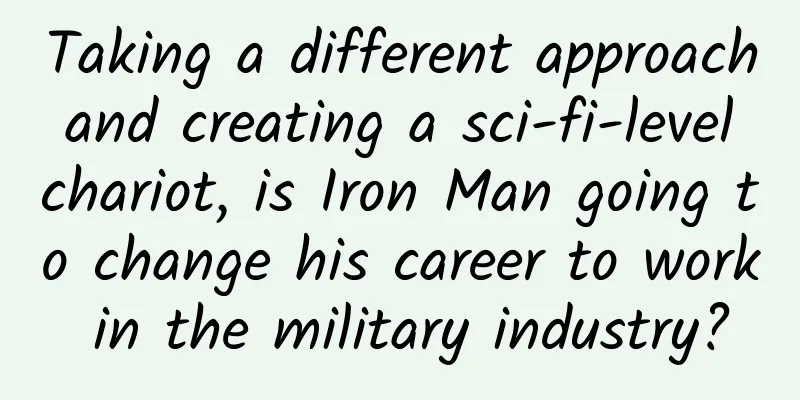Bidding promotion: a universal method to improve bidding conversion rate!

|
There are many bidding issues, but in my opinion, they are all similar. The work of bidding is similar. The difference is your mood when adjusting prices and optimizing accounts... Here, I will summarize the bidding process as follows. Step 1: Split ROI using the reverse method ROI is the first step for bidders to start bidding. No matter what position you are in, your boss will not let you work without a sense of purpose. Usually they don't care how you achieve your goal, they only care whether you can achieve it in the end. So, bidder, in order for you to achieve your goal perfectly in the end, the first thing you need to do is to break down your goal . For example. The boss says to you, "XX, you have to complete 50 clues for me this month!" At this point, you don't have a clear path to completion for the 50 clues. 50 Clues, how to play? How to optimize your account? Did you know? Therefore, you need to use the backward method to split these 50 clues. Reverse method: The normal bidding process is display-click-conversation-lead-conversion, and the reverse method allows you to be goal-oriented and reverse the entire process.
Once you have clearly defined the goals to be achieved in each process, you will be more targeted in subsequent account optimization. Remember, have clear goals, have specific objectives, and be focused. Next, there is the next step. Step 2: Draw the core process/key steps of user conversion Drawing the core process of user conversion is what I like to do most. It can be said that what you draw is not the process, but the inspiration. In the process of drawing, you will find that there are many areas that can be optimized. This part is simple yet difficult. It’s simple because you only need to list the key links in the user experience process, but it’s difficult because you need to understand your products and services well enough, be familiar enough with the user experience process, and have enough insight into users. After drawing out the core conversion process leading to user conversion, you will clearly see the conversion direction of each user and where he will start making decisions. But for bidding, the user's entire core process may be divided into the following steps. Almost all marketing can follow this process, but the only difference is the marketing factors of each process. Then you can proceed to the next step. Step 3: List the key factors that affect each step At every stage of the user conversion process, there are some key factors that will affect the conversion rate of this stage. By listing these key influencing factors, we can better plan and control the overall situation, and improve the user conversion rate of each link by optimizing these influencing factors. In the process of listing the key influencing factors of each link, we can rely on experience, survey users, have internal discussions, and analyze competing products. Here, we will focus on one method - the process crossing method. Process traversal means that you need to switch perspective, imagine yourself as the target user, then go through the conversion process you drew and feel every point that the user may touch. You must simulate, define, and select new content, new methods, and new media to influence users in the conversion process of target users in order to control the conversion rate. Finally, list all the influencing factors on the entire user conversion process. Of course, I have summarized some for your reference here only. ▲ Factors affecting display ▲ Factors affecting click volume ▲ Factors affecting activation volume ▲ Factors affecting ROI and improvement ideas Step 4: Verify and optimize key factors one by one After the previous step, you must have listed many key influencing factors, and then you can focus on optimizing each type of influencing factor. In the early stage, it is recommended to conduct small-scale testing and low-cost trial and error, that is, minimum feasible verification, to maximize ROI. Then verify these influencing factors, find the key influencing factors that can best improve the conversion rate, and focus on optimizing to improve the overall conversion rate. You can't just keep doing hard work based on your feelings or inherent experience. The correct way should be based on concrete experience, reflective observation, abstract generalization, active practice, and so on. All in all, the principles behind these steps are very simple, but we must persist in using this structured logical thinking in actual operations. In particular, the three steps of splitting ROI, drawing the conversion process, and listing the influencing factors are particularly important. I personally have always required myself and others to develop this habit. The seemingly simple work will make many things clearer and clear at a glance, and you will know where your next focus is. Develop your thinking so that you won’t worry when encountering problems. Source: |
<<: Planning and promotion: an advanced guide to planning! (recommended collection)
>>: Tik Tok Principal "Love Principal VIP Family Bucket" Audio Tutorial
Recommend
my country's "artificial sun" is the world's leading weapon
| What is an artificial sun? The so-called "...
The most comprehensive e-commerce operation plan for you!
What should a qualified e-commerce operation look...
Excellent material cases in various information flow industries: costs reduced by 300%, CTR soared to 7%!
What kind of creative has a high click-through ra...
In the era of mobile Internet, how can we find accurate users and obtain first-hand traffic at the lowest cost?
How can we find the precise users of our products...
13 ways to make money as a side job. What money-making projects are there on the Internet now?
1. Become a partner of Baidu Zhidao Open Baidu an...
What should you pay attention to when choosing a cloud server?
We can find many cloud servers on the market, and...
"Red Coast Base" is more than just science fiction: We are looking for alien civilizations in the radio waves
"Red Coast Base" is more than just scie...
NADA: Pulse Analysis of the U.S. Automotive Market in April 2022
The monthly "Market Beat" report releas...
One picture to understand | Are left-handed people more likely to become artists?
Produced by: Page Expression x Dongdong Miao...
APP rapid operation and promotion, never miss the new media channel operation
When most APP operators are operating, they want ...
How to choose an open source project that suits you to read
[[148226]] People say that reading source code is...
Interpreting ASP.NET 5 & MVC6 Series (15): MvcOptions Configuration
Program model handling IApplicationModelConventio...
Why does a fever come back a few days after it subsided? Doctors remind you!
Recently, many people have gradually recovered, b...
A steak for 9.9 dollars comes with a frying pan. Is it really edible?
Review expert: Wang Guoyi, Postdoctoral Fellow in...
This article will introduce you to the "Jiuxiao Huanpei" zither collected by the National Museum
A brief study on the “Jiuxiao Huanpei” zither col...









